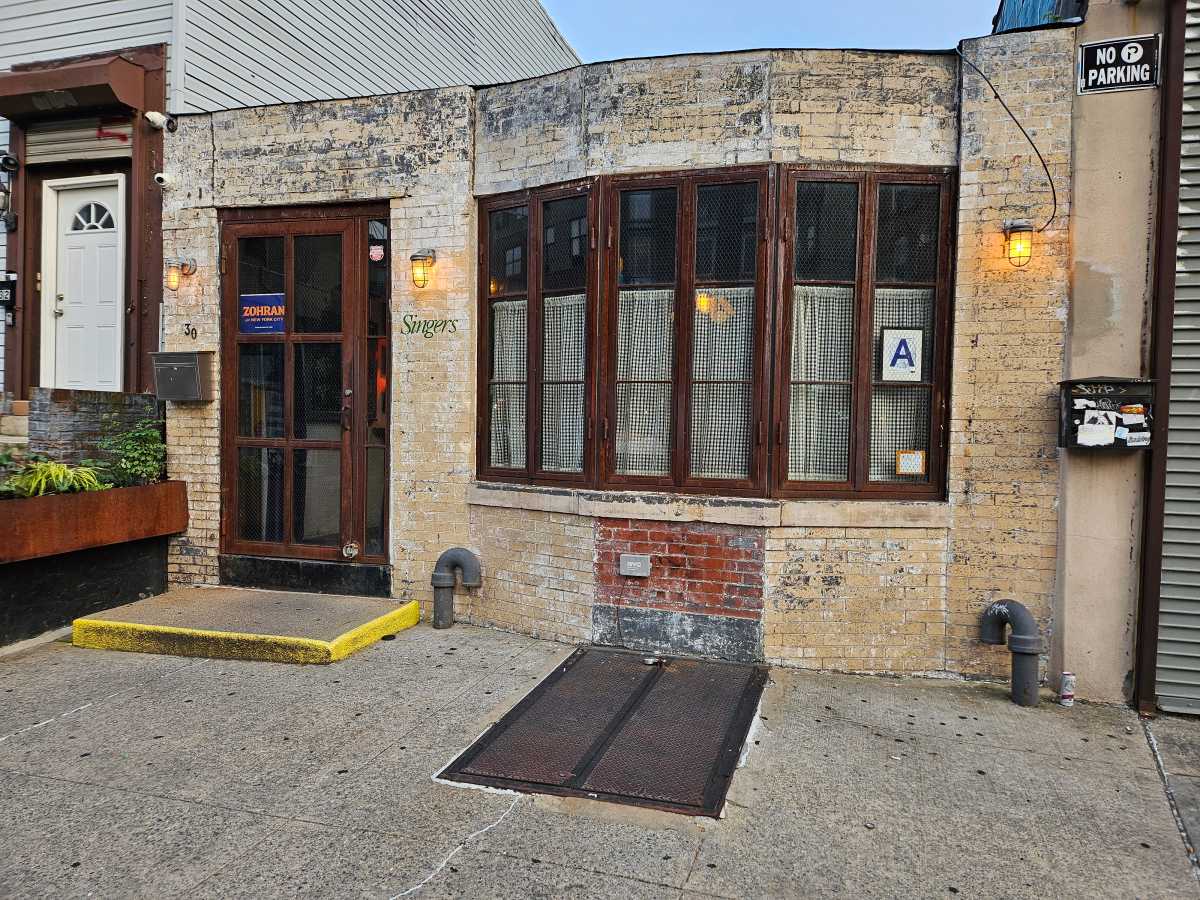By Cathy Jedruczek
When Erik Feder drove to the office of Downtown Express near Canal St. from Long Beach, Long Island for an interview on one steamy June afternoon, he had to park his car on Perry St. That’s 10 blocks away, roughly a 15-minute walk in hot and humid weather. Feder didn’t mind parking his car so far from the newspaper’s office and he didn’t mind walking either.
“Generally you don’t park next to where you are going,” he said when he finally reached his destination. Like any motorist, he wanted to avoid being ticketed or towed away. And he would’ve probably driven around the neighborhood looking endlessly for legal parking if it wasn’t for his guide. Feder is the author of his first book, the Downtown Edition of “The Feder Guide to Where to Park Your Car in Manhattan.”
“If someone buys the book and the book helps them avoid one parking ticket, the book will pay for itself six times,” Feder assured. “If it helps avoid towing once, it will pay for itself 14 times. It’s like insurance because if you get towed it hits you in the wallet.”
The idea for the book, Feder says, came up unexpectedly and it seemed like a crazy one in the beginning. One day he was in the city working at one of his many jobs as a freelance editor and decided to step outside to get some sunlight. He was out for a short period when he noticed a traffic officer slapping parking tickets on every car that was parked on the street. Feder said that’s when he thought, “Somebody should write a book listing street parking regulations so that people could plan ahead and have a better understanding of where they could and couldn’t park.”
Feder then took up the task and began his research. He called the Department of Transportation and was told that a portable database with street regulations doesn’t exist and that the department doesn’t have enough human resources to compile such information for him, even if he was to pay. Feder, determined to continue with the project focused on the area from Battery Park to 30th St. He drove for four months collecting parking information from 5,000 Downtown streets. At the end he had long lists of rules and regulations and no organizational pattern, but along the way, Feder says “all of that continually morphed and became what it is.”
The book is easy to navigate even for somebody not familiar with Lower Manhattan. It is divided into Downtown West and Downtown East and it lists parking regulations on every single street. Next to each street there is either a smiley face, indicating that it is legal to park at least on some part of the street or that the street has alternate parking regulations, or a frown, which informs the reader that the street is a bad place to park. The guide also lists over 150 parking facilities, provides maps and offers tips for what to do if a car is missing, towed or ticketed. The book also has tricks to get out of paying for parking tickets.
“I once fought the ticket because the offending officer wrote red Honda on the ticket and I had a blue Toyota,” said Feder. “I fought the ticket and I didn’t have to pay. You could also fight the ticket if the license number or the officer’s signature is illegible.”
Feder, whose car was once towed away from a legal parking space, also gives tips on how to go about getting your car back.
“One of the most sickening feelings a driver can get is returning to the spot where you know you left your car, only to find it missing,” Feder wrote. He then lists numbers and Web sites, which help the driver find out about the status of his or her car.
Feder originally wanted to do a guide for all of Manhattan, but he found out that there was no need to go above 124 St., since it is easier to park there. Downtown seemed like a natural choice, Feder explained, because it is hard to navigate due to its street layout and a large number of streets with parking restricted to government workers.
Michael Caceres, who drives to the city once in a while from White Plains to shop, parked recently on the corner of Spring and Hudson. He was surprised to find the parking space so fast because usually he drives around for hours. His friend often goes and buys what they came for while he drives around in the neighborhood. Caceres skimmed through Feder’s guide during an interview and said that it would probably help him find parking on his next visit to the city.
Pedro Rodriguez, a Coca-Cola truck driver who gets tickets for double parking the truck on a daily basis, thought that the guide would better serve tourists who are not familiar with parking in the city at all. But, when asked where he parks when he comes Downtown at night he said he “drives around and around… and around” until he finds a free space.
Feder, who is currently working on the parking guide for Midtown, also hopes to create parking guides for major cities in the U.S. and even abroad. He lived in Munich, Germany for two years and he thinks people there would find his guide useful. The book is available online and at some Barnes & Noble Stores.
WWW Downtown Express
























